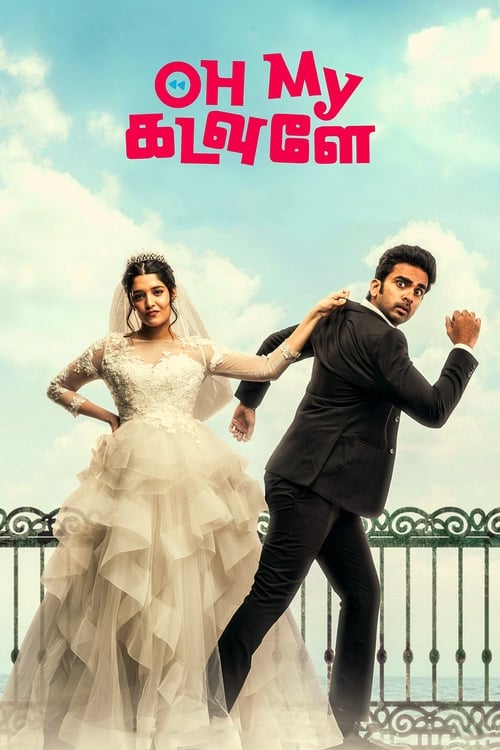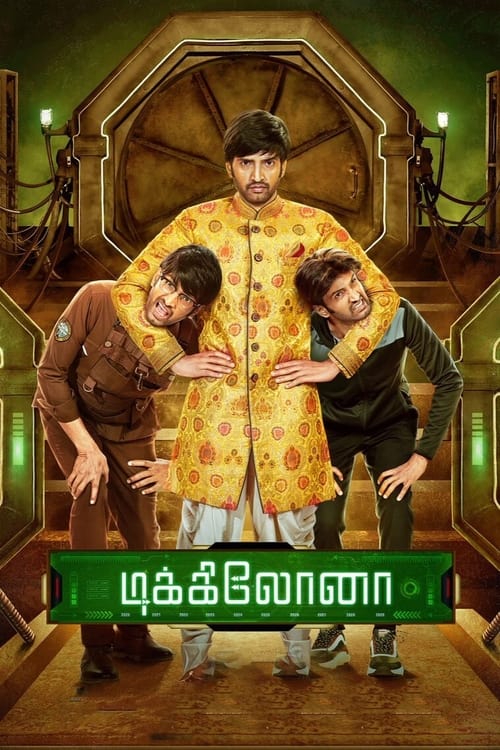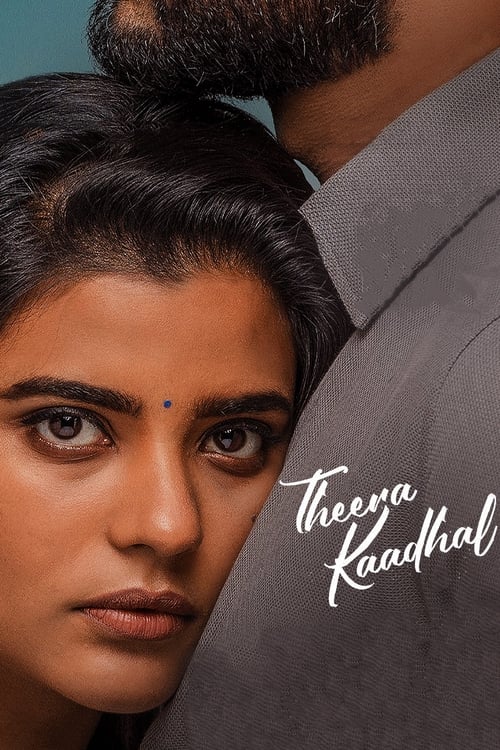
Ask Your Own Question
What is the plot?
Mamakiki (2020) opens with four college friends--Madhu, Manimaran (Mani), Kiranthi, and Kishore--reuniting after five years since their graduation. The setting is a casual reunion, filled with laughter and nostalgia, but beneath the surface, each carries stories of their separate journeys since college. The film unfolds as an anthology, with each segment diving into the individual life of one friend during the intervening years, revealing their struggles, hopes, and disappointments.
The first segment centers on Madhuvanti Arun, known as Madhu, played by Preetha Anandan. The film introduces her as a vibrant young woman whose life after college has been marked by familial and societal pressures. We see Madhu at her home, where her mother, a traditional and somewhat overbearing figure, urges her to settle down. Madhu's mother has arranged prospective grooms for her, and the tension between Madhu's desires and her mother's expectations is palpable. One of these suitors, Kishore Rajkumar, is introduced in a formal meeting scene, where Madhu's polite but distant demeanor contrasts with the hopeful eagerness of the groom. The dialogue here is telling: Madhu says quietly, "I'm not ready to live someone else's life," signaling her internal conflict.
As Madhu navigates these arranged meetings, the film visually contrasts the sterile, formal settings of the groom interviews with flashbacks of her college days, where she was free and joyful with her friends. The emotional weight builds as Madhu confides in Mani during the reunion, revealing that she has been struggling to find a partner who respects her independence. This segment ends on a hopeful note, with Madhu deciding to take control of her life rather than succumb to societal pressure.
The narrative then shifts to Manimaran, or Mani (played by Ramesh Thilak), whose story is more comedic but layered with subtle melancholy. Mani's segment explores his search for love and meaning. He is shown in various humorous situations, from awkward dates to failed attempts at impressing women. A standout scene is Mani's encounter with a woman named Kokila, whose mother is stern and skeptical. Mani's nervous attempts to win Kokila's approval lead to a series of comedic mishaps, including a disastrous dinner where Mani accidentally spills food, causing a tense but funny confrontation. Mani's dialogue, "I just want someone who laughs at my jokes, even the bad ones," encapsulates his yearning for acceptance.
Despite the humor, Mani's story also touches on loneliness and the fear of being left behind as his friends move forward in life. The reunion acts as a catalyst for Mani to reflect on his self-worth and the importance of genuine connection, rather than superficial romance.
The third segment follows Kiranthi (Maanas Chavali), whose life after college has been shaped by family expectations and personal fears. Kiranthi's story is more introspective, focusing on his relationship with his father and his struggle to assert his own identity. The film shows Kiranthi in his family home, where his father's traditional views clash with Kiranthi's modern outlook. A key scene involves a heated conversation where Kiranthi says, "I want to live my life, not the life you planned for me," highlighting the generational conflict.
Kiranthi's narrative also explores a childhood fear that has lingered into adulthood, symbolizing his internal battle with anxiety and self-doubt. The film uses visual motifs like shadows and dim lighting to evoke this fear, creating a tense atmosphere. His story culminates in a confrontation with his father, which, while emotionally charged, ends with a tentative understanding, suggesting hope for reconciliation.
The final segment focuses on Kishore (Dev Ramnath), whose story intertwines with themes of friendship, love, and self-discovery. Kishore's narrative is the most complex, involving flashbacks to his school days and his relationship with a woman named Rita Miss (Amrutha Srinivasan). The film reveals that Kishore has been grappling with unfulfilled love and the consequences of past decisions.
A pivotal moment occurs when Kishore encounters a police inspector (Sharath Ravi) during a tense scene that hints at a misunderstanding or conflict from his past. This encounter forces Kishore to confront his mistakes and the impact they have had on his life. The dialogue here is poignant: Kishore admits, "I ran away from my problems, but they caught up with me."
Throughout Kishore's story, themes of redemption and forgiveness emerge. The film shows him reaching out to old friends and attempting to mend broken relationships. The reunion serves as a turning point where Kishore acknowledges his flaws and embraces the possibility of change.
As the reunion progresses, the four friends share their stories, laughter, and tears. The film's tone shifts from light-hearted comedy to a more reflective mood, emphasizing the enduring bonds of friendship despite life's challenges. The final scenes depict the friends walking together, symbolizing their renewed connection and hope for the future.
Importantly, Mamakiki does not feature any deaths or violent confrontations. The conflicts are primarily emotional and interpersonal, focusing on the characters' internal struggles and relationships. The climax is not marked by dramatic action but by the emotional resolutions each character reaches.
The film ends on an optimistic note, with Madhu, Mani, Kiranthi, and Kishore embracing their pasts and looking forward to new beginnings. The reunion, set in a familiar college campus location, closes with the friends promising to stay connected, underscoring the film's themes of friendship, growth, and acceptance.
In summary, Mamakiki (2020) is a romantic comedy anthology that explores the lives of four friends after college, highlighting their individual journeys through love, family, and self-discovery. The narrative is structured around their reunion, with each segment providing insight into their personal challenges and triumphs. The film's resolution is hopeful, emphasizing emotional healing and the power of friendship rather than dramatic plot twists or tragic events.
What is the ending?
In the ending of "Mamakiki," the main characters confront their pasts and the choices they have made. The film culminates in a tense confrontation that leads to a resolution of their conflicts, ultimately allowing them to find a sense of closure and hope for the future.
As the final scenes unfold, we see the characters gathered at a significant location that holds memories of their shared history. Tensions rise as unresolved issues come to the forefront. Each character expresses their feelings, revealing deep-seated regrets and desires. The emotional weight of their past actions hangs heavily in the air, but as they confront these truths, they begin to understand one another better.
In the climax, a pivotal moment occurs when one character makes a sacrifice that changes the dynamics of their relationships. This act of bravery leads to a breakthrough, allowing the others to reflect on their own choices and the impact they have had on each other. The film closes with a sense of reconciliation, as the characters embrace their new paths forward, leaving behind the burdens of their past.
Now, let's delve into the ending in a more detailed, chronological narrative.
The scene opens in a dimly lit room, filled with the remnants of the characters' shared history. The air is thick with tension as they gather, each one carrying the weight of their past decisions. The camera pans across their faces, capturing the mix of anxiety and determination etched into their expressions.
As they sit in a circle, the first character, Alex, breaks the silence. His voice trembles as he recounts a pivotal moment from their past that has haunted him. He speaks of a choice he made that hurt his friends, and the regret spills out of him like a torrent. The others listen intently, their eyes reflecting a blend of empathy and pain.
Next, Maya, who has been quiet until now, stands up. Her hands shake as she reveals her own struggles, the sacrifices she made for the group that went unacknowledged. Her vulnerability resonates with the others, and they begin to share their own stories, each confession peeling back layers of misunderstanding and resentment.
The atmosphere shifts as they confront the reality of their relationships. The camera captures close-ups of their faces, highlighting the tears that well up in their eyes. The emotional intensity builds, and the audience can feel the weight of their shared history pressing down on them.
In a moment of clarity, Sam, who has been the most withdrawn, finally speaks up. He acknowledges his own failures and the ways he has pushed everyone away. His admission is raw and heartfelt, and it serves as a catalyst for the others to dig deeper into their feelings.
As the confrontation reaches its peak, a sudden crisis occurs--a physical threat that forces them to band together. In this moment of danger, Alex makes a selfless decision to protect Maya, putting himself at risk. This act of bravery shocks the group, and it becomes a turning point in their relationships.
With the threat neutralized, the characters are left breathless, realizing the depth of their connection. They embrace, tears flowing freely as they find solace in one another. The camera captures this moment of unity, a stark contrast to the isolation they felt earlier.
The film concludes with a montage of each character stepping into their new lives, symbolizing their growth and the lessons learned. Alex, now more confident, takes a step towards pursuing his dreams. Maya, with a renewed sense of purpose, begins to advocate for others who have faced similar struggles. Sam, having opened up, starts to rebuild his relationships, reaching out to those he had pushed away.
As the screen fades to black, the audience is left with a sense of hope and the understanding that while the past cannot be changed, the future is still unwritten. Each character has found a way to move forward, carrying the lessons of their shared journey with them.
Is there a post-credit scene?
In the movie "Mamakiki," produced in 2020, there is indeed a post-credit scene that adds an intriguing layer to the story.
As the credits roll, the screen fades to black before transitioning to a serene beach setting at sunset. The sound of gentle waves lapping against the shore fills the air, creating a peaceful atmosphere. The camera slowly pans to reveal a figure sitting on the sand, silhouetted against the vibrant hues of orange and pink in the sky.
As the camera draws closer, it becomes clear that the figure is one of the main characters, Lani, who has been on a transformative journey throughout the film. She gazes out at the horizon, a contemplative expression on her face, reflecting on the challenges she faced and the growth she experienced. The weight of her past decisions lingers in her eyes, but there is also a glimmer of hope and determination.
Suddenly, a small child runs into the frame, laughing and playing in the sand. Lani turns to the child, her face breaking into a warm smile. The child, who appears to be a younger version of Lani, represents her innocence and the dreams she once held. This moment signifies a reconciliation with her past and a newfound sense of purpose.
As the scene unfolds, Lani stands up and walks towards the water, the child following closely behind. They splash in the waves, their laughter echoing in the air, symbolizing the joy of embracing life and moving forward. The camera pulls back, capturing the expansive ocean and the two figures, small yet significant against the vastness of the world.
The scene fades to black once more, leaving the audience with a sense of closure and the message that while the past shapes us, it is the future that we can still mold. This post-credit moment encapsulates the film's themes of growth, healing, and the enduring spirit of hope.
What motivates the main character, Lani, to return to her hometown?
Lani is driven by a deep sense of nostalgia and unresolved issues from her past. She feels a strong pull to reconnect with her roots and confront the memories of her childhood, particularly the loss of her mother, which has haunted her for years. This emotional journey is compounded by her desire to find closure and understand her family's history.
How does the relationship between Lani and her estranged father evolve throughout the film?
Initially, Lani's relationship with her father is strained and filled with resentment due to years of silence and emotional distance. As the story progresses, they are forced to confront their shared grief and misunderstandings. Through a series of heartfelt conversations and shared experiences, they begin to rebuild their bond, leading to moments of vulnerability and reconciliation.
What role does the setting of the Hawaiian landscape play in the story?
The Hawaiian landscape serves as a vibrant backdrop that reflects Lani's emotional journey. The lush greenery, stunning beaches, and cultural elements of the island evoke a sense of belonging and nostalgia. As Lani explores these familiar places, they trigger memories and emotions that are pivotal to her character development, symbolizing both her past and her path to healing.
What is the significance of the traditional Hawaiian rituals depicted in the film?
The traditional Hawaiian rituals are integral to the narrative, representing the connection between the characters and their cultural heritage. These rituals serve as a means for Lani to reconnect with her identity and the spirit of her ancestors. They also highlight themes of community, healing, and the importance of honoring one's roots, which are central to Lani's journey.
How does Lani's relationship with her childhood friend, Kimo, impact her journey?
Kimo acts as a catalyst for Lani's self-discovery and healing. Their friendship rekindles old feelings and provides Lani with a sense of support and understanding. Kimo encourages her to confront her past and embrace her identity, ultimately helping her navigate the complexities of her emotions and the challenges she faces in reconciling her past with her present.
Is this family friendly?
"Mamakiki," produced in 2020, is a family-friendly film that primarily focuses on themes of love, family, and cultural heritage. However, there are a few scenes and aspects that might be considered potentially objectionable or upsetting for children or sensitive viewers:
-
Emotional Conflict: The film contains scenes of family disagreements and emotional turmoil that may be intense for younger viewers. Characters experience moments of sadness and frustration that could resonate deeply.
-
Cultural Tensions: There are instances where cultural misunderstandings and tensions arise, which may lead to uncomfortable situations for some characters. These moments are handled with care but could still be challenging for sensitive audiences.
-
Mild Language: There are occasional uses of mild language that may not be suitable for very young children, depending on parental discretion.
-
Themes of Loss: The film touches on themes of loss and longing, which may evoke strong emotions. Some scenes may depict characters dealing with grief or separation, which could be upsetting for sensitive viewers.
Overall, while "Mamakiki" is designed to be accessible to families, these elements may require parental guidance for younger audiences.



























